Who would have thought that the most widely circulated image on the Internet in the past two days
Neither is it a private photo of some famous celebrity bursting
Nor is it the hottest little NFT photo in the "picture world" right now.
Instead, here's one:
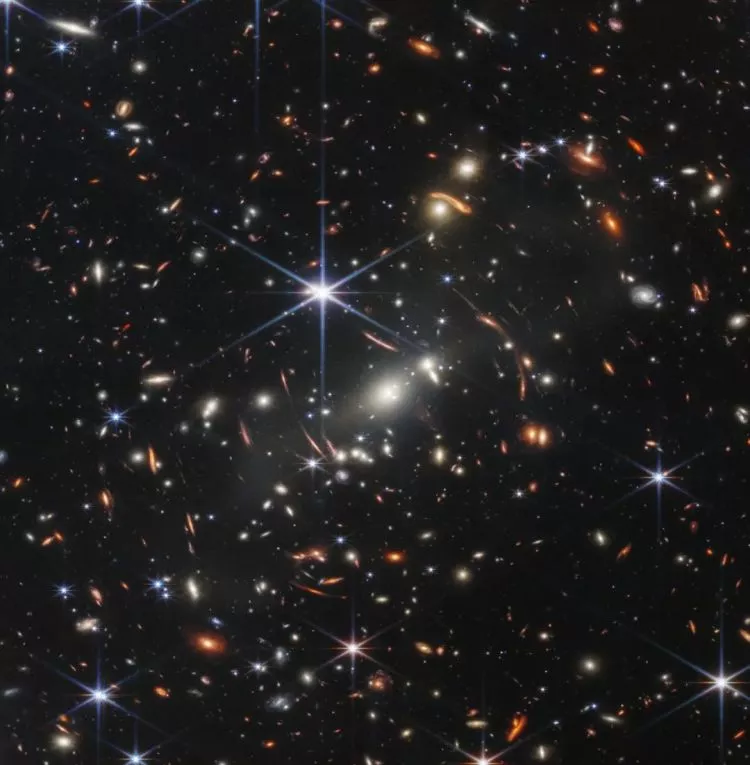 Image credit: NASA
Image credit: NASA
It is NASA NASA's "$10 billion camera" - one of the first photos sent back by the James Webb Space Telescope.
This photograph includes thousands of galaxies in the entire SMACS J0723.3-7327 (0723 for short) cluster, and it is the deepest and clearest photograph in the history of human space observation - every elliptical patch of light you see is a galaxy as large as the Milky Way or even more massive.
"Yet this photo contains only a very small part of the universe," said NASA Administrator Bill Nelson, "If you were to squeeze a grain of sand, straighten your arm, and then look through your eyes at the gap between your fingers, what this photo corresponds to is really just that small little slice of the universe in the angle."
More interestingly, you can observe a certain "aperture distortion" in the photo - that is actually a true representation of the "gravitational lensing effect" proposed by Einstein and others, i.e. light This is a lensing-like bending of light as it passes through the gravitational field (like the black hole "Gargantua" seen with the naked eye in the famous science fiction movie "Star Trek"):
What is contained in this photo released today by NASA may be the largest scale gravitational lensing effect ever observed by humans.
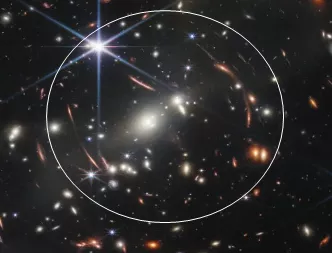 Image credit: NASA
Image credit: NASA
In the perception of astronomers and astrophysicists, the vast gravitational lensing effect predicts the existence of a denser concentration of gravitational field objects, including galaxy clusters and black holes, in the midst of this tiny angular, vast corner of the universe than elsewhere.
Not only that, but if you zoom in on this photo and look closely at the dark red object in the image below: scientific infrared observations suggest that the light produced by this object took about 13.1 billion years or so to be captured by the Webb telescope, creating such a dark red spot of light.
And the known age of the universe is only about 13.8 billion years. In other words, this dark red object, has been around since shortly after the birth of the universe.
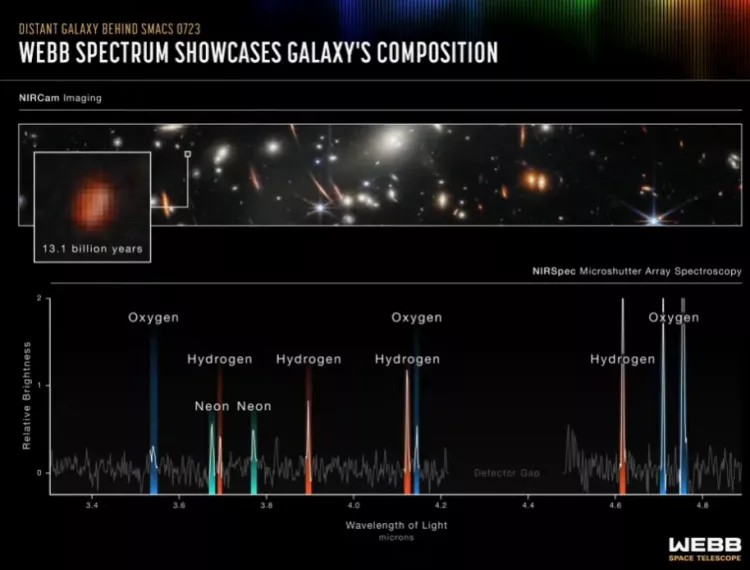 Image credit: NASA
Image credit: NASA
Including the dense gravitational lensing effect, and the dark red objects included - the phenomena shown in the photos seem to be telling scientists:
The direction in which this photo was taken is where the universe began.
The photo was so important that President Biden and Vice President Harris stole NASA's "headline" scheduled for Tuesday, U.S. time, by holding a live White House briefing on Monday afternoon to preempt the release of SMACS 0723 alone... ...
 Image credit: NASA
Image credit: NASA
However, this time the White House This "headline grab" does, however, deepen the awareness of the importance of the Webb telescope and the whole enterprise of deep space observation to science and humanity as a whole.
"In '99 we launched the Hubble Telescope, allowing deep space observations to escape the confines of the atmosphere for the first time," said U.S. Vice President Kamala Harris, " and today we are finally entering a new phase of scientific discovery. The Webb telescope will allow us to see even deeper into space, enhancing our understanding of the origins of life, galaxies, and indeed, the entire universe."
The Search for Exoplanets
When asked what is the most interesting question about space exploration, I believe most people ask a similar question: are we humans the only intelligent beings in the universe?
Therefore, NASA positioned the subject of the second photo as an exoplanet:
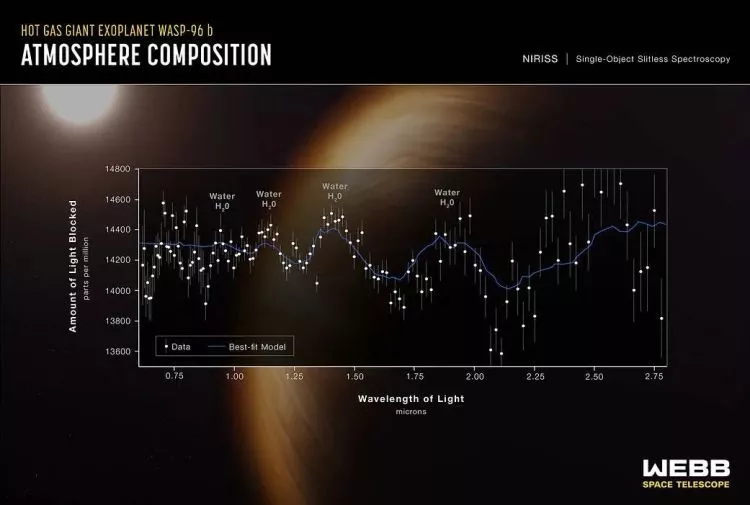 Image credit: NASA
Image credit: NASA
Wait? Is the chart misplaced? Why is the chart covering the photo?
And there is no mistake, it is WASP-96 b, a gas giant planet about 1,150 light years from Earth with an atmosphere and water present in it.
The chart was put in the photo because NASA didn't actually photograph it, and there isn't enough evidence to give a reasonable guess as to its appearance. The data in the chart, however, is more than enough to prove that this exoplanet exists and has the chemical signature of a cloud formed by water within its atmosphere.
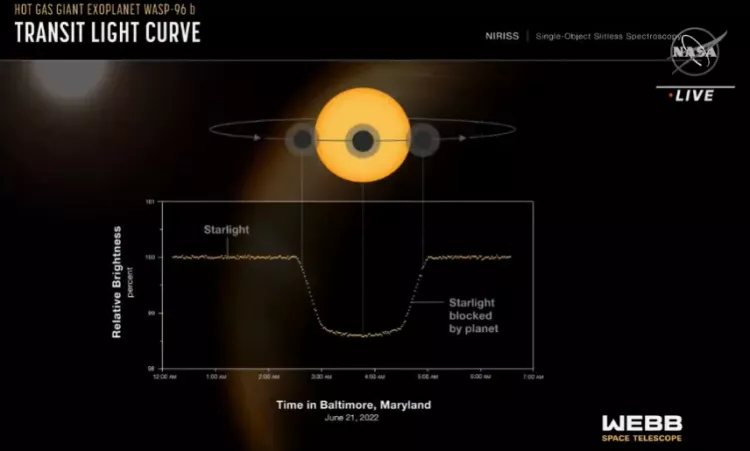 Image credit: NASA
Image credit: NASA
According to NASA, WASP-96 b is a relatively unique, extraterrestrial planet that has no particularly close planets in our solar system to directly compare to.
On the basis of current information, the chances of life on WASP-96 b should be very slim: it also orbits a star close to the Sun, has a very short rotation, its "year" is only about three and a half days on our Earth, and is ridiculously hot- So it's almost impossible for carbon-based life similar to that on our planet to exist.
But the existence of an extraterrestrial planet with water is still an extremely important and meaningful discovery, not to mention the fact that the Webb telescope made it shortly after arriving at its intended location and turning on its work. "The Webb telescope is as powerful and as efficient as the Hubble telescope has been in the past," said Knicole Colón, deputy director scientist of the Webb project.
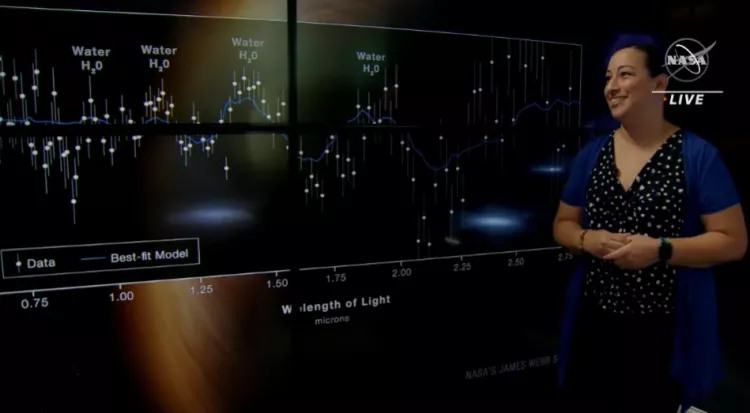 Image credit: NASA
Image credit: NASA
Dying to live, dying to live
Recurrence is a very common concept, and is easily found in categories such as philosophy and religion. And in science, there is the famous law of conservation of energy, and the theory of relativity, and a host of other theories and conjectures that have been developed.
On the scale of celestial bodies at the stellar level, the cycle is even more of a constant truth. This time, NASA has also taken three pictures with the Webb telescope, representing the eternal cycle of celestial bodies from conception to death to new life.
Like the tragic ending of Swan Lake, some stars shine their brightest at the moment of death. The Southern Ring Nebula (NGC 3132) is one such poignant example.
Image credit: NASA
Past observations have generally suggested that this cascading shell of nebulosity would have come from a white dwarf star in its "dying" phase. It was unable to resist the collapse of gravity and continued to eject gas and material debris outward, forming a beautiful layer of planetary nebulae.
Before that, scientists had enough evidence that the Southern Ring Nebula was actually a binary star system. But the nebula and the other bright star are much brighter, and people instead can't see the real maker of all this beautiful gas.
And in this photo sent back by the Webb telescope (the mid-infrared imaging result on the right), NASA also finally sees the two stars clearly in contrast to each other for the first time.
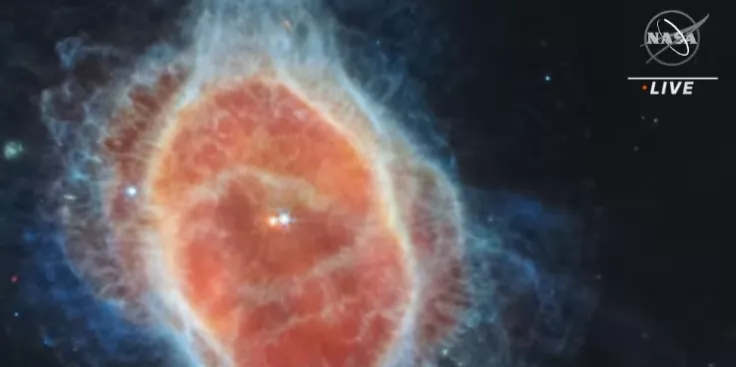 Image credit: NASA
Image credit: NASA
NASA The fourth photo, subsequently released, gives us can observe the most bizarre and interesting star birth mechanism up close and personal from an extremely large viewpoint.
The stars in this photo are the famous Stephan's Quintet, a group of five visually close galaxies.
Why is it extremely large? There are five galaxies in the picture, which together are only one-fifth the diameter of the Moon when viewed from Earth, yet this picture has 150 million pixels and is made up of nearly a thousand photographs.
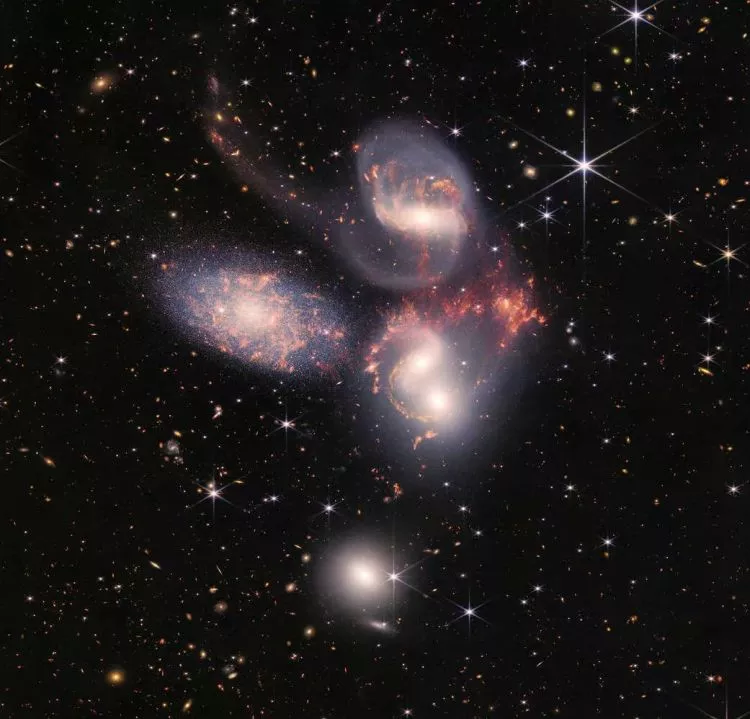 Image credit: NASA
Image credit: NASA
Although the galaxies are said to be fivefold, in fact, of these galaxies Only four galaxies are really close enough to have a physical influence on each other, and they are collectively called HCG 92.
This interaction is what makes it most interesting: the four constituent galaxies of HCG 92 are still largely independent of each other, but their gravitational interactions are causing an extremely active exchange of gas between the galaxies. Specifically, the two galaxies in the middle of the picture are in the process of merging at high speed, with gas and matter from one galaxy falling into the other at millions of kilometres per hour.
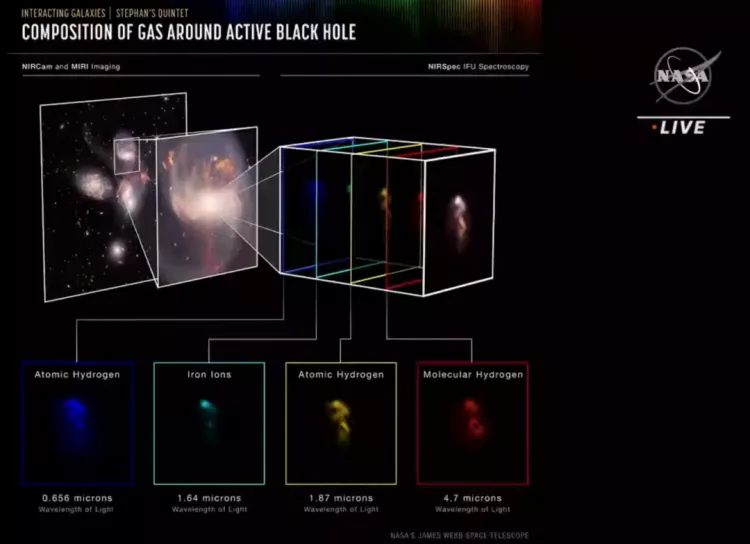 Image credit: NASA
Image credit: NASA
Scientists at the European Space Agency have found that This gas and matter exchange activity leads to extremely active celestial activity, and the infrared signature observed from this region is a very strong indication that the birth of countless new stars is accelerating in this region.
This is the most direct manifestation of the "flood of power".
After observing this flood on a macroscopic scale, NASA's fifth photo gives us a closer look at the gestation of new life. This is also the last photo, from the Carina Nebula: the reflection of nebulae and celestial bodies makes this area appear like cascading mountains, and the stars in the background.
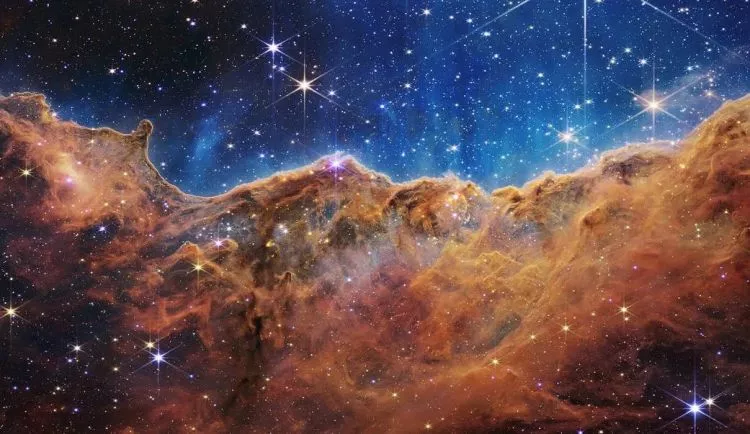 Image credit: NASA
Image credit: NASA
The image shows the NGC of the Ship Base Nebula 3324 region, where stars are being born in large numbers. The bright purple spot near the center of the image, for example, is a star in the process of being born, drawing material from the surrounding nebula gas, "growing" like crazy, and emitting extremely intense ultraviolet radiation in the process.
This intense radiation in turn has a profound effect on the surrounding space, which is why we see what looks like "steam" in the upper part of the picture, especially near the "mountains". In fact, they are ionized gas due to intense ultraviolet radiation, as well as particles of hot material that appear for various reasons (such as the remains of other stars after they have aged and died). These gases and particles are then gravitationally "pushed" into the denser nebulae in the lower part of the picture, where they are absorbed by the more densely populated stars being born, creating a "recycling" of matter in the universe.
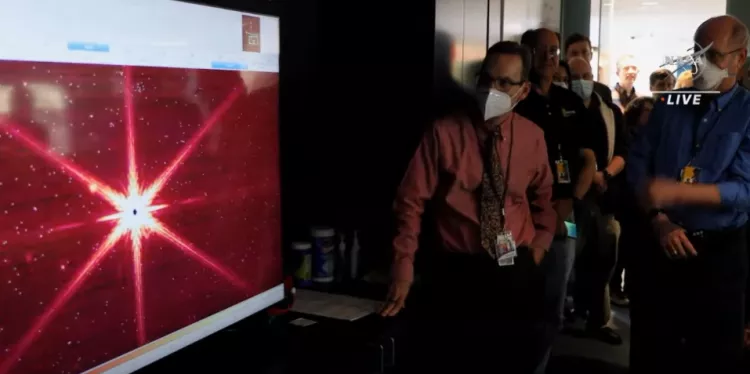 Image credit: NASA!!
Image credit: NASA!!Image credit: NASA
As a famous "celestial cradle "NGC 3324 is such a mix of violence and beauty.
If the SMACS 0723 cluster photo shows the universe at its oldest and most mysterious, then this photo of the Ship's Base Nebula is the opposite, taking us to one of the youngest corners of the universe and its vibrant life.
There's a lot that NASA has been able to see in this photo, and there's still a lot that it can't. Amber Straughn, the project's deputy director scientist, points to a dark, raised section of the photo, "Like what's really going on in this area? We still don't know, there's really so much data and information in this photo."
Explore the universe, for the sake of your roots, and for the sake of the future
Through five photos and their respective themes, NASA actually tells the story of a universe that keeps going back and forth.
The Webb telescope that took these pictures, one of the most expensive projects in the history of American and global sky exploration. The project bounced around for a full 14 years after it was launched, only to finally launch last Christmas, when it was already severely overspent by at least 20 times, with a total life-cycle cost of $10 billion.
Well, the Webb telescope did not disappoint. It's not long since the official launch of the telescope, and it has already added a lot of new knowledge about the universe and a perspective never seen before. Project team member Jane Rigby revealed that she "went and had an ugly cry" when she first saw the pictures coming in.
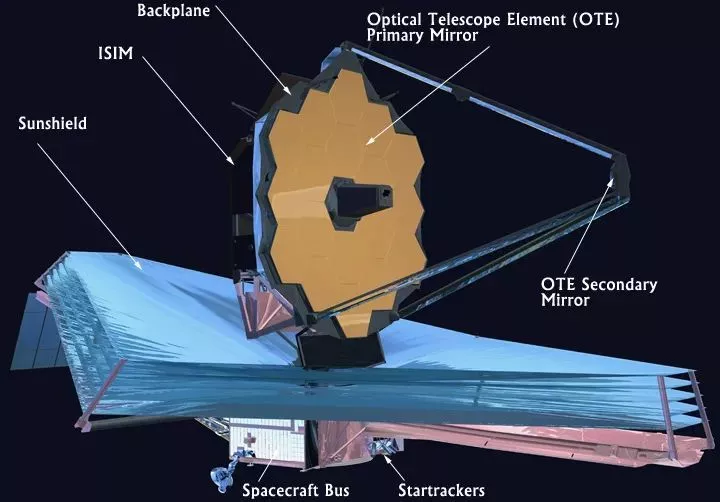 Image credit: NASA
Image credit: NASA
$10 billion is a lot of money, indeed. Because in order to achieve its goal, the Webb telescope must achieve many unprecedented technological breakthroughs.
For example, in order to observe stars billions of light years away and detect the extremely faint infrared rays they emit, the telescope had to have a huge reflector, but in order to be able to be launched into space in a rocket load, it had to be split into 18 small hexagonal lenses, which were then unfolded in a honeycomb shape to a diameter of about 6.5 meters once in space.
The base material of the lens is a special synthetic graphite epoxy resin, and the main reflective material is beryllium (pinyin: pi2, chemical symbol Be), a relatively rare element in the universe, plus a layer of gold with a thickness of only about 700 atoms, because gold is more effective in reflecting infrared light.
In use, each of the thousands of tiny "shutters" on each lens must be able to open and close independently at operating temperatures below 60 Kelvin (approximately -213°C), and the lens angle must be finely adjusted, a feat in motor micro-control, so to speak.
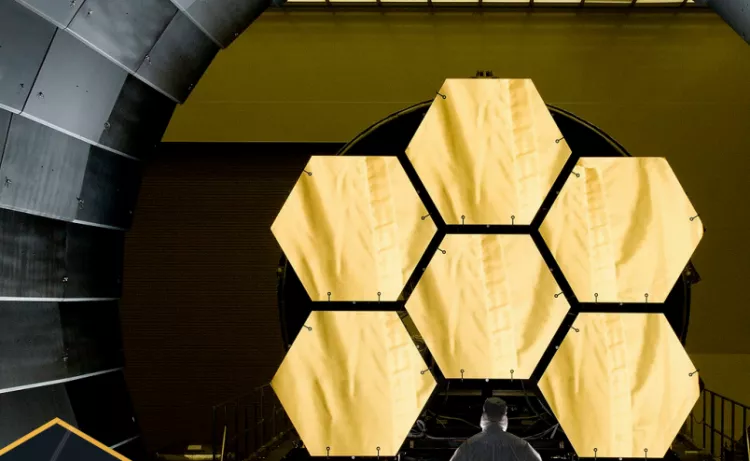 Image credit: NASA
Image credit: NASA
To protect the lenses and lenses from cryogenic sensitivity, the Weber Telescope's quadrilateral sunshade measures about 21x14 meters, with the longest diagonal spread almost the length of a tennis court, and is made of five layers of Kapton high-strength chemical compound filaments developed by DuPont + aluminum foil and other temperature-insulating compound coatings.
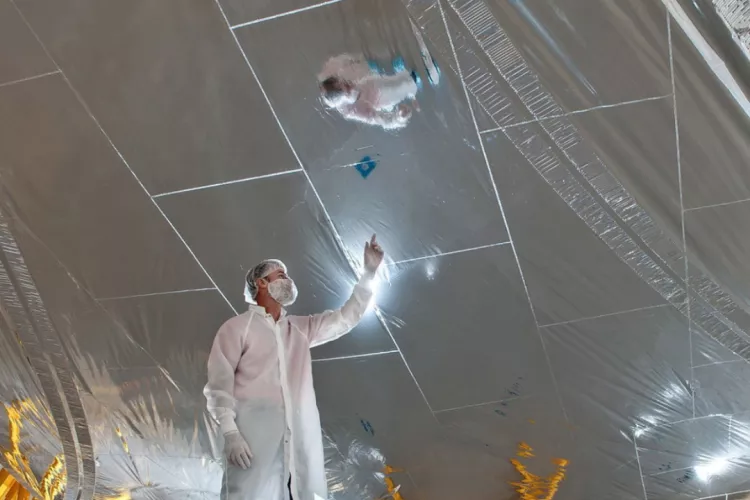 Image credit: NASA!!
Image credit: NASA!!Image credit: NASA
This structure is so well insulated that even when the side facing the sun reaches 125 degrees, near the telescope this side of the body is still able to remain at -235 degrees Celsius.
 Image credit: NASA
Image credit: NASA
It was to ensure that the telescope's observations would be effective and not let money already spent go down the drain, the project developers had to burn through more money to make sure nothing went wrong.
What's more, these expenditures don't just apply to the telescope itself; the results of many of the Webb project's technological innovation breakthroughs, such as near- and mid-infrared detection technologies, waveform recognition and filtering algorithms, fully passive cooling technologies, and micro-robotics, can be used in other high-tech and civil scenarios.
For example, NASA and OEM engineers invented a way to precisely and quickly measure and polish lenses, a technology that is now being put to use in state-of-the-art laser eye surgery.
One might ask: Shouldn't we be spending more money and energy on building a better future? Why spend tens of billions of dollars to point the lens at the skies billions of years ago?
One way of looking at it is that it reflects the quest for "roots".
On a larger scale, the search for roots is not just a humanistic, but a scientific pursuit. Humans as a species, as the only planetary-star intelligent beings currently in the world of the universe as we know it, would certainly deserve to learn more about how the universe actually came into being and what the origins of life really are.
Understanding the inner mechanisms of birth, ageing and death of celestial bodies can help mankind to better discover and understand the rules by which everything in the universe works. By mastering the past and mastering the rules, we can build a better future.
The Webb telescope, and the Hubble and Spitzer telescopes that preceded it, and the more high-tech deep space observatories that will follow it, will help us tread one more solid footprint after another on this never-ending path of scientific exploration.
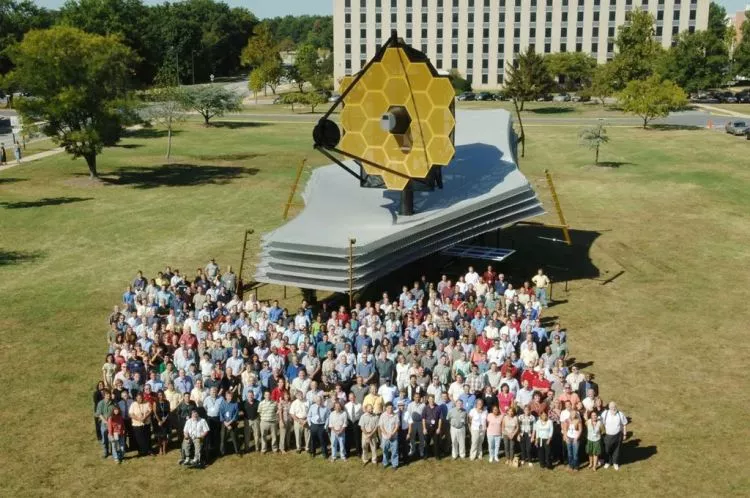 Image credit: NASA * Caption credit | NASA
Image credit: NASA * Caption credit | NASA